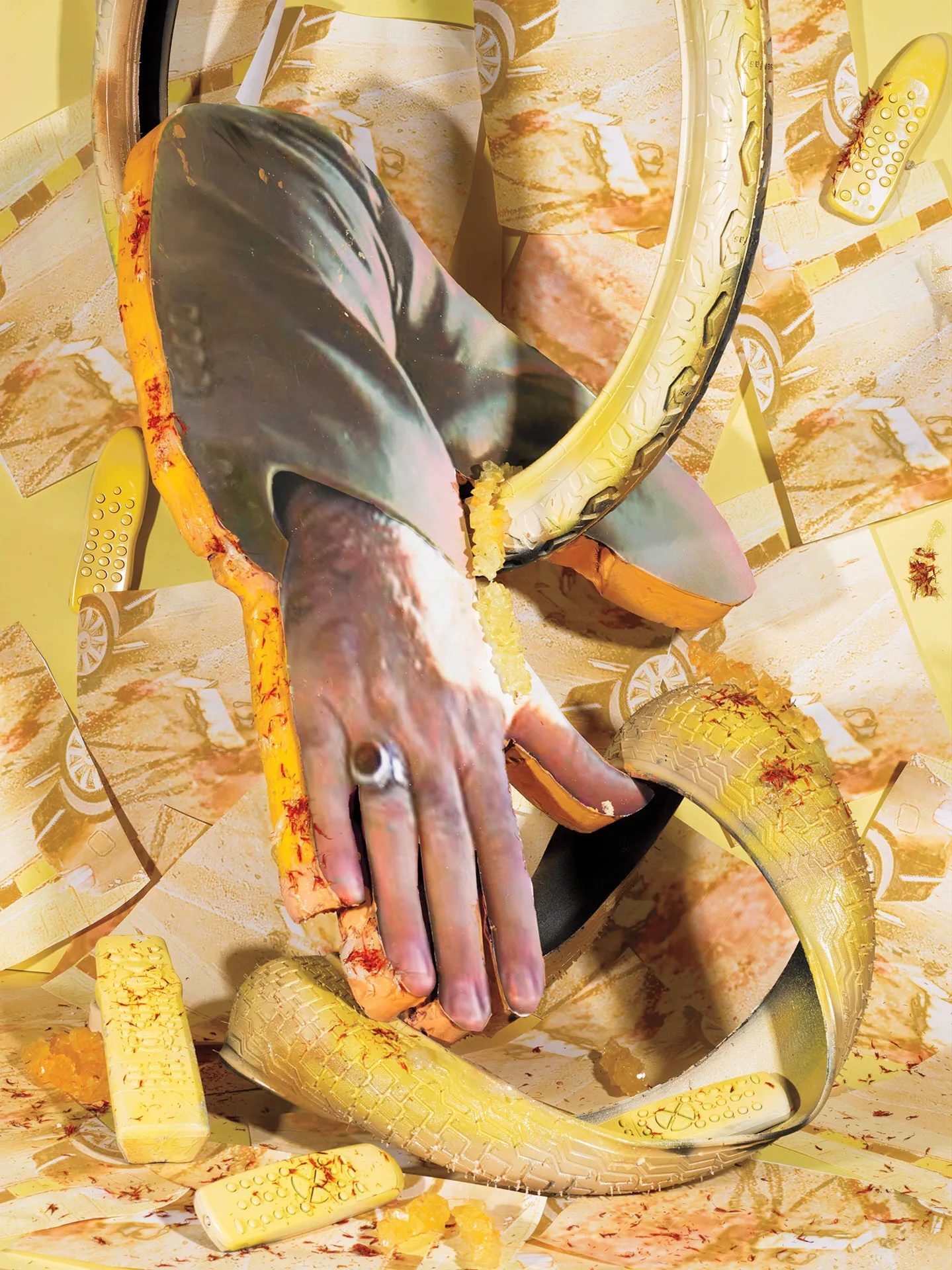04 April 2024 Each issue of A.i.A. comes with a limited-edition artist’s print, and in our Spring issue, we invited Sheida Soleimani to contribute a special collectible work. Soleimani interrogates the narratives disseminated by the press and social media in a practice that fuses sculpture, performance, and photography. In her ongoing series 'Levers of Power', the Iranian American artist recontextualizes images of public figures to reveal how seemingly simple gestures—a pointed finger, a clenched fist—inform perceptions of people both familiar and foreign. 'Armita' (2024), the special pull-out print that accompanies the Spring issue, is a new entry in the 'Levers' series. Below, Soleimani tells A.i.A. the story behind the work’s revolutionary symbols.
On January 3, 2020, I was in Marfa, Texas, sitting at a bar drinking a Negroni. There was a TV in the bar, and I saw my last name flash across the screen. I thought, Oh god, this can’t be good. After 9/11 my family went through a lot of racism, so anytime that I see any Western media covering Iran, I get worried. The news was that Trump [had] assassinated [Iranian military officer] Qassemi Soleimani. We were in Texas, about to fly home, and, meanwhile, there was my last name all over the news. Suddenly, everyone that saw it—even friends of mine who I think are fairly enlightened or educated individuals—start texting me: “Are you okay?” “We’re so sorry for your family.”
Meanwhile, no one knew that Qassemi Soleimani was a ruthless government’s dictator and chief of the armed forces in Iran. There was no recognition of who he was. When people are ignorant, I have to find humor in it—there’s no other coping mechanism. When I was in elementary school, people would ask me if my dad knew Saddam Hussein. My dad would say, “Tell them that we played backgammon.” I said that in school and people believed me. So, in the same way, I texted back, “thank you so much for your condolences.”
It became a thought experiment for me. Where do we get our news from? Who do we deem to be good or bad, especially when it comes to politics? At any given point, we’re taking in information in sound bites from our phones, we’re seeing a headline. But because of my baba, I’ve been trained to never trust a single news source. They’re all fragments and figments of the truth.

Sheida Soleimani, Kill Zone, 2021.
That led me to the series Levers of Power, in which I’m looking at the body language of politicians or activists—different people that are part of this game—and thinking about how we are socially conditioned to read gestures. Like, if someone’s pointing their finger: they’re bad. I wanted to learn people’s media literacy and literacy with history. So I began severing hands and asking people to focus on the images surrounding the gestures.
Armita is a response to the murder of Armita Geravand, who was pronounced dead this past October after being in a coma for over two weeks. The hand is from footage of her in a subway station in Tehran, where she was taken and beaten by the morality police just like Mahsa Amini for not wearing her hijab correctly. The Ayatollah’s regime has tried to co-opt the tulip to make it a symbol of the right wing. People who are Marxist, anti-Islamic-government, anti-totalitarian-dictatorship want to take the tulip back to its roots, starting in the 1950s. That was when Mohammad Mosaddegh was elected, and we had the first kind of guerilla activist groups fighting in the jungle. There is a revolutionary protest song that I grew up with my dad singing to me as a lullaby—it’s about the coming of the spring. Tulips are these ever-returning bulbs: they have delicate flowers that a frost could kill, but the bulbs stay underground and always return. In Persian culture, they’re a symbol of revolution.
I’ll be 34 soon, and my generation, we want change to happen quickly. But my father’s generation—and those before him—were like, You know, revolution requires persistence and time. Hands—or “Levers”—are miniature monuments, not in the oppressive bronze-sculpture sense but like how bookmarks exist to say, “Hey, this is here, but this is ongoing …”
—as told to Tessa Solomon

